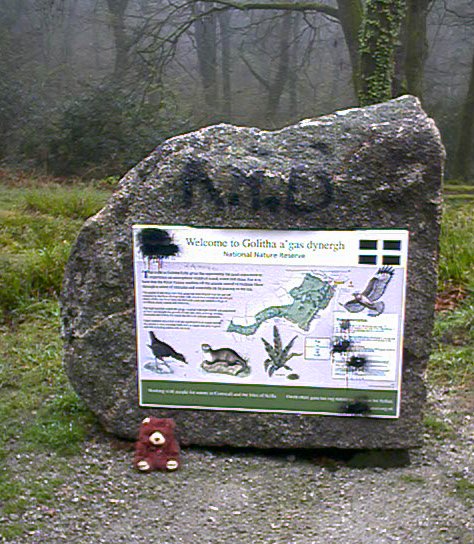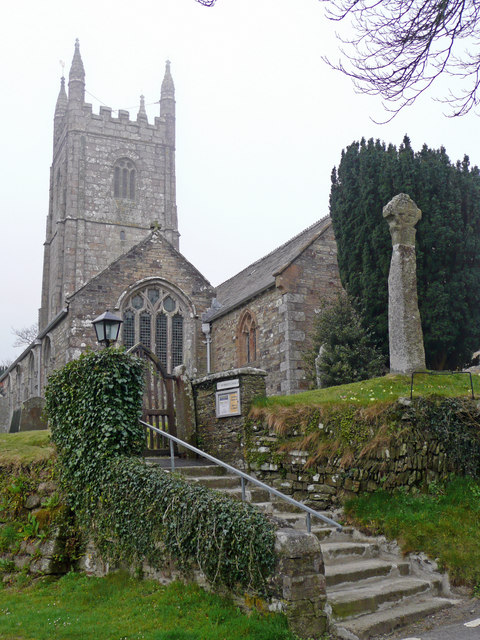|
Milltown, Lanlivery
Milltown is a hamlet in Cornwall, England. It lies in Lanlivery civil parish, about a mile south of Lostwithiel, in the valley of a small tributary of the River Fowey.Ordnance Survey ''One-inch Map of Great Britain; Bodmin and Launceston, sheet 186''. 1961. Cornwall has another hamlet called Milltown, in the parish of Cardinham Cardinham ( kw, Kardhinan) (the spelling 'Cardynham' is almost obsolete) is a civil parish and a village in mid Cornwall, England. The village is approximately three-and-a-half miles (6 km), east-northeast of Bodmin. The hamlets of Fletche .... References Hamlets in Cornwall {{Cornwall-geo-stub ... [...More Info...] [...Related Items...] OR: [Wikipedia] [Google] [Baidu] |
Cornwall Council
Cornwall Council ( kw, Konsel Kernow) is the unitary authority for Cornwall in the United Kingdom, not including the Isles of Scilly, which has its own unitary council. The council, and its predecessor Cornwall County Council, has a tradition of large groups of independent councillors, having been controlled by independents in the 1970s and 1980s. Since the 2021 elections, it has been under the control of the Conservative Party. Cornwall Council provides a wide range of services to the approximately half a million people who live in Cornwall. In 2014 it had an annual budget of more than £1 billion and was the biggest employer in Cornwall with a staff of 12,429 salaried workers. It is responsible for services including: schools, social services, rubbish collection, roads, planning and more. History Establishment of the unitary authority On 5 December 2007, the Government confirmed that Cornwall was one of five councils that would move to unitary status. This was enacted by st ... [...More Info...] [...Related Items...] OR: [Wikipedia] [Google] [Baidu] |
Cornwall
Cornwall (; kw, Kernow ) is a historic county and ceremonial county in South West England. It is recognised as one of the Celtic nations, and is the homeland of the Cornish people. Cornwall is bordered to the north and west by the Atlantic Ocean, to the south by the English Channel, and to the east by the county of Devon, with the River Tamar forming the border between them. Cornwall forms the westernmost part of the South West Peninsula of the island of Great Britain. The southwesternmost point is Land's End and the southernmost Lizard Point. Cornwall has a population of and an area of . The county has been administered since 2009 by the unitary authority, Cornwall Council. The ceremonial county of Cornwall also includes the Isles of Scilly, which are administered separately. The administrative centre of Cornwall is Truro, its only city. Cornwall was formerly a Brythonic kingdom and subsequently a royal duchy. It is the cultural and ethnic origin of the Cornish dias ... [...More Info...] [...Related Items...] OR: [Wikipedia] [Google] [Baidu] |
Hamlet (place)
A hamlet is a human settlement that is smaller than a town or village. Its size relative to a Parish (administrative division), parish can depend on the administration and region. A hamlet may be considered to be a smaller settlement or subdivision or satellite entity to a larger settlement. The word and concept of a hamlet has roots in the Anglo-Norman settlement of England, where the old French ' came to apply to small human settlements. Etymology The word comes from Anglo-Norman language, Anglo-Norman ', corresponding to Old French ', the diminutive of Old French ' meaning a little village. This, in turn, is a diminutive of Old French ', possibly borrowed from (West Germanic languages, West Germanic) Franconian languages. Compare with modern French ', Dutch language, Dutch ', Frisian languages, Frisian ', German ', Old English ' and Modern English ''home''. By country Afghanistan In Afghanistan, the counterpart of the hamlet is the Qila, qala (Dari language, Dari: ... [...More Info...] [...Related Items...] OR: [Wikipedia] [Google] [Baidu] |
Lanlivery
Lanlivery ( kw, Lannlyvri) is a village and civil parish in Cornwall, England, United Kingdom. The village is about west of Lostwithiel and five miles (8 km) south of Bodmin. The Saints' Way runs past Lanlivery. Helman Tor, Red Moor and Breney Common nature reserves lie within the parish. ''Churchtown'', a holiday centre for adults and children with physical and learning disabilities, is located in Lanlivery and is run by the national charity Vitalise. Other settlements Other settlements in the parish of Lanlivery include Redmoor, Sweetshouse, Milltown and Tangier (now a suburb of Lostwithiel). The manor of Penkneth or Penknight was one of the original 17 Antiqua maneria of the Duchy of Cornwall. (The seal of the borough of Lostwithiel was a shield charged with a castle rising from water between two thistles, in the water two fish, with the legend "Sigillum burgi de Lostwithyel et Penknight in Cornubia".) At Pelyn is a 17th-century house which was formerly the seat of ... [...More Info...] [...Related Items...] OR: [Wikipedia] [Google] [Baidu] |
Civil Parish
In England, a civil parish is a type of administrative parish used for local government. It is a territorial designation which is the lowest tier of local government below districts and counties, or their combined form, the unitary authority. Civil parishes can trace their origin to the ancient system of ecclesiastical parishes, which historically played a role in both secular and religious administration. Civil and religious parishes were formally differentiated in the 19th century and are now entirely separate. Civil parishes in their modern form came into being through the Local Government Act 1894, which established elected parish councils to take on the secular functions of the parish vestry. A civil parish can range in size from a sparsely populated rural area with fewer than a hundred inhabitants, to a large town with a population in the tens of thousands. This scope is similar to that of municipalities in Continental Europe, such as the communes of France. However, ... [...More Info...] [...Related Items...] OR: [Wikipedia] [Google] [Baidu] |
Lostwithiel
Lostwithiel (; kw, Lostwydhyel) is a civil parish and small town in Cornwall, England, United Kingdom at the head of the estuary of the River Fowey. According to the 2001 census it had a population of 2,739, increasing to 2,899 at the 2011 census. The Lostwithiel electoral ward had a population of 4,639 at the 2011 census. The name Lostwithiel comes from the Cornish "lostwydhyel" which means "tail of a wooded area". Origin of the name The origin of the name Lostwithiel is a subject much debated. In the 16th century it was thought that the name came from the Roman name ''Uzella'', translated as ''Les Uchel'' in Cornish. In the 17th century popular opinion was that the name came from a translation of ''Lost'' (a tail) and ''Withiel'' (a lion), the lion in question being the lord who lived in the castle. Current thinking is that the name comes from the Old Cornish ''Lost Gwydhyel'' meaning "tail-end of the woodland". The view from Restormel Castle looking towards the town sh ... [...More Info...] [...Related Items...] OR: [Wikipedia] [Google] [Baidu] |
River Fowey
The River Fowey ( ; kw, Fowi) is a river in Cornwall, England, United Kingdom. It rises at Fowey Well (originally kw, Fenten Fowi, meaning ''spring of the river Fowey'') about north-west of Brown Willy on Bodmin Moor, not far from one of its tributaries rising at Dozmary Pool and Colliford Lake, passes Lanhydrock House, Restormel Castle and Lostwithiel, then broadens below Milltown before joining the English Channel at Fowey. The estuary is called Uzell ( kw, Usel, meaning ''howling place''). It is only navigable by larger craft for the last . There is a ferry between Fowey and Bodinnick. The first road crossing going upstream is in Lostwithiel. The river has seven tributaries, the largest being the River Lerryn. The section of the Fowey Valley between Doublebois and Bodmin Parkway railway station is known as the Glynn Valley ( kw, Glyn, meaning ''deep wooded valley''). The valley is the route of both the A38 trunk road and the railway line (built by the Cornwall Railw ... [...More Info...] [...Related Items...] OR: [Wikipedia] [Google] [Baidu] |
Cardinham
Cardinham ( kw, Kardhinan) (the spelling 'Cardynham' is almost obsolete) is a civil parishes in England, civil parish and a village in mid Cornwall, England. The village is approximately three-and-a-half miles (6 km), east-northeast of Bodmin. The hamlets of Fletchersbridge, Millpool, Milltown, Mount, Cornwall, Mount, Old Cardinham Castle and Welltown are in the parish. Large areas which were once deciduous woodland are now plantations of conifers known as Cardinham Woods and managed by Forestry England. Edmund John Glynn, of Glynn House in the parish, rebuilt the house at Glynn in 1805 (it has a front of nine bays and a portico). Early history Richard Fitz Turold (Thorold) was an Anglo-Norman landowner of the eleventh century, mentioned in the Domesday Survey. He had a castle at Cardinham, where he was a major tenant and steward of Robert of Mortain. The holding included the manor of Penhallam. His son was William Fitz Richard of Cardinham. Restormel Castle belonged to th ... [...More Info...] [...Related Items...] OR: [Wikipedia] [Google] [Baidu] |



